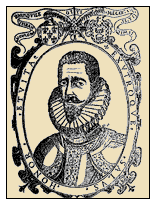A Defense of Pacheco
He is acerbic, often dogmatic, and difficult to like. Pacheco’s work at first glance would not seem to be an ideal metric by which to unify a tradition. Many people reading Pacheco for the first time have a strong negative reaction to the trollish way he jibes at the works of others. He does not resist the urge to throw punches in his prose and perhaps it makes him an early species of today’s internet troll who pokes and annoys others for his own amusement. Reacting to his tone, we might quickly dismiss him but the problem is that Pacheco is also an incredibly gifted technical writer and theoretician who is perhaps the most prolific fencing author in history. Most of the technical information we currently have about La Verdadera Destreza is a direct or indirect result of Pacheco’s work.
Carranza’s work does not contain enough technical material to describe a complete system. Thibault’s work is both extensive and technical but appears to be out of sync with the other authors. Most of the other La Verdadera Destreza authors available are derivative of Pacheco’s core system which means they are in some sense accountable to his examination standards. For this reason I often find myself presenting or defending Pacheco’s position as a common point of verifiable evidence even while I acknowledge that the tradition is broader than a single author.
The classical tradition that trained me enforces a core standard of practice with meticulous care. As an example, the hand in the invitation of second shall be held at a certain height and angle; to do otherwise is incorrect. However, if we examine the historical record, we see a multitude of different examples of the invitation in second and it might seem that this insistence on uniformity would be a compulsion which also borders on trollish antagonism towards the students. Why? What purpose does it serve?
By reducing scope in the school and during the examinations it creates right and wrong answers. That brief state of artificial purity allows students to develop their core skills and to carefully climb within a demanding system from ignorance into technical competence. As the students develop understanding and ability their own questions naturally arise which challenge the purity of the right and wrong answers.
An Instructor candidate should be able to recite the answers in the textbook and teach most of the actions described. The Provost candidates teach at a higher level and might qualify their answers, delve into difficult and broader theory, and occasionally explore concepts outside the textbook. The Master candidate is expected to not only be able to teach the textbook in its entirety but to also know when to leave it aside and justify the reasoning. The mastery of the lesson and execution becomes a personal expression which realizes the tradition as an act of creative art. An answer outside the scope of the book can become correct when good reason and judgment are applied.
William Gaugler’s fencing master’s program was not cloning human versions of his textbook but rather creating a common language and understanding by which a community could work outward to achieve nuanced understanding which could be both broad and deep. This might best describe the position from which Figueiredo wrote his Oplosophia; he has enough knowledge and expertise to master a tradition and yet uses his ability to provide critical expertise on the elements involved which challenges the canon of the tradition itself.
It is within this textbook form that Pacheco’s work shines. We have his proposed testing criteria and a large body of work which we can use to create a uniform standard for examination. A student citing Pacheco in his examination works from a defensible place of canonicity which provides a textbook of right and wrong answers. It forms a common core of theory and practice from which the students may safely learn in an elegant simplicity and ultimately transcend into multi-hued complexity.
Pacheco is not the only voice in our tradition but he is one of the great LVD authors and just as the textbooks in the classical program provide a beginning, mastery involves internalizing the work and seeing beyond the rules into the deeper and changing causes from which they are derived. Studying Pacheco diligently can become a Carrancine exercise in the search for verifiable science which can be taught and demonstrated.
For a Carrancine teacher Pacheco serves as a brilliant starting point, as a tool for teaching and examination, as an exercise in application, and as a historically uniform standard for evaluating knowledge and practice. Pacheco is a ready-made roadway from ignorance, through competence, into mastery. When that path is paired with Carranza’s instructions about teaching, science, art, and ethics we move from creating builders into creating architects.



What do you think?
You must be logged in to comment.